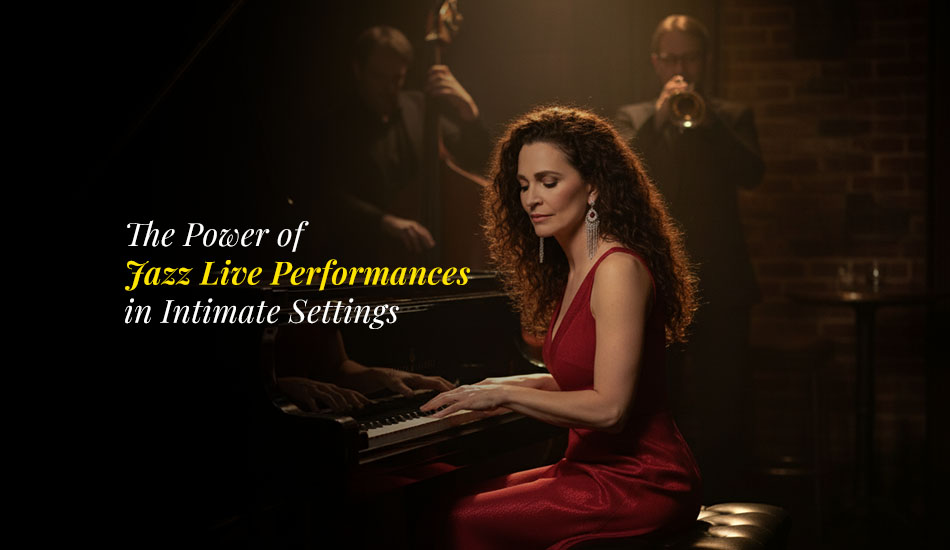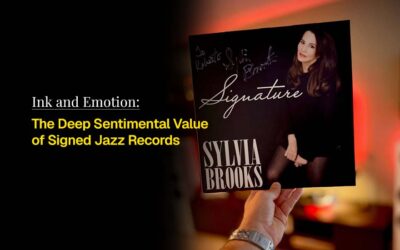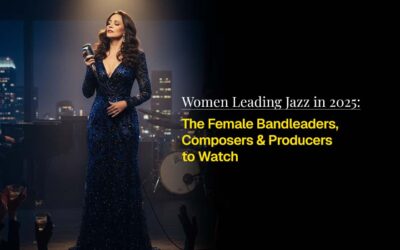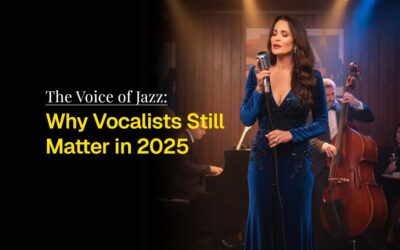Jazz is much more than music; rather, it is an experience and a dialogue between performer and audience. Swelling from the live jazz performances, the studio albums offer just clipped songs. The real pulse of jazz comes from these performances in front of a live audience.
Very few records can actually capture jazz, for in those rare moments when spontaneity is possible and a small audience adds its own special magic (or indeed sadness), this effect cannot be translated by machines alone.
Join us on this blog as we explore why intimacy is crucial to jazz music, what makes jazz live performance sometimes invoke such a response from its audience (partly because of its greater scope for improvisation), and when those traditions are still vital even today, with new jazz releases in 2025 all the time.
The Essence of Jazz: Built on Improvisation
The cornerstone of jazz is improvisation. Unlike other genres, where songs are static and fixed, jazz lives through sudden changes. In real time, musicians talk back and forth to make music, and the audience is part of their dialogue.
Improvisation during jazz live performances makes a distinctive creation each time-no two shows are the same. A song may take on different lyrics, chords become a horn riff, or let’s say a sax solo can go wrong from being melodic (or vice versa). This flexibility is what keeps jazz perpetually evolving and vibrant. To fans, jazz music songs mean heritage. Why go back? Have a listen for yourself in jazz live performances; maybe you’ll be caught on film.
The Power of Intimate Settings
Jazz can fill grand concert halls, but its authentic flavor comes from its smaller, more intimate roots, smoky clubs and lounges, dimly lit rooms at sparsely attended concerts where the atmosphere is personal.
In an intimate setting, you not only hear the music–you feel it. You can feel the bass throb deep in your bones, or catch a subtle murmur from those drums as if it is just inches away. Proximity means that there is nothing to hide emotionally: Artists understand what’s happening on all levels of thought, can adjust their mood as needed, and form instantaneous connections with an audience.
In a jazz concert, live music and improvisation are linked closely in this way. The room itself seems to be practically another instrument: it shapes the sound and the mood.
Emotional Connection Through Live Performances
Jazz is more than just a stream of notes; it is also one means through which people give expression to their emotions. For an artist to present a ballad such as “Body and Soul” and an original song like this workshop called "Holding Back Tears" can certainly make people happy, not only through her own experiences but even through the feeling and mood of that place.
Emotion takes precedence in jazz live performances. The studio rendition of a song is carefully controlled and perfected, while live, notes might crack and a singer’s voice might quaver. But these are what make the performance most real. The audience doesn’t just consume music; they live it right along with you.
Jazz as A Community Experience
Disarming Situations for Jazz Harmony Studios create recorded jazz, large spectacles demonstrate it, and music festivals maintain it as a trade secret. But regardless of these three approaches, jazz lives and develops ultimately in live performance. And it is the sense of community that forms around the common experience of jazz live performance that gives this music its unique value for listeners.
The jazz clubs of old were public halls where people from all walks of life congregated to experience something together. They served as cultural nodes on the fabric of life in which everyone is constitutive of every other, and formative influences flow back and forth interactively. The mood is different at small, intimate jazz concerts from that at a pop concert where thousands of fans gather to see an idol. Audience members may follow the beat, applaud at an improvised solo, and occasionally give a cry of encouragement. When characters in the jazz community enter into this reciprocal relationship, its image as a performing arts genre flourishes, and the question of who is playing or listening becomes ambiguous.
Iconic Examples of Jazz in Intimate Settings
Throughout history, some of the best moments in Jazz music took place in small, intimate settings. Think of Miles Davis at the Village Vanguard; a packed house crowd found his show electric. Or John Coltrane with his Quartet Live at the Half Note; people loved that band’s performance so much on that particular summer weekend in 1965 that each one played themselves into oblivion, hoping to never stop from sheer exhaustion. But all three members seemed unafraid and eager when they took the stage just now, saying yes, this was gonna happen once more, a number before morning had passed on into noon. And who can forget Billie Holiday at Cafe Society? No, those performances weren’t really concerts; they were cultural events that played a substantial part in forming the nature and cultural features of jazz music.
Contemporary jazz has gone on to a variety of new forms, continuing through young artists and unbelievably, in such places as that. Among all these different types is a category called instrumental, and the large majority of musicians included in this set add something of their own. But it is still jazz. The concert is great. For example, in large halls, Sylvia Brooks’ most recent album Signature comes off beautifully, both to record and listen to on your own at home. However, songs such as “The Flea Markets of Paris” and “Your Heart Is As Black As Night” live in a small club and become movie scenes.
Why Recordings Can’t Replace Live Jazz
Studio albums – even some of the greatest jazz albums in recorded history are essential to preserve the genre. By using these means, you can perfect a piece of music. You can polish it until it shines and everything stands just so, but recording lacks that final element, which is breathing together with a real human being on stage.
Once in a while, the tempo might change, or a solo will stretch out. In a jazz live performance, the singer may take an entire lyric and make it her own, based on whatever energy of the moment breaks forth that night. These are moments which will never come back, they are all passing events once seen only in reruns, but now broadcast live and for keeps. One tells you the words, the other brings them to life.
The Future of Jazz in Intimate Spaces
Jazz keeps evolving. Though new jazz releases in 2025 are accessible to global audiences via streaming platforms such as Spotify and Apple iTunes, it’s still live and in-person spaces where the spirit of jazz lives. Today, younger listeners, especially Gen Z, are finding out about jazz through TikTok clips of live performances, and then piling into the clubs to experience that vibe for real.
The pairing of digital discovery with live authenticity suggests great potential for the future of jazz. While sound recordings always will be important, live jazz in intimate settings remains at the heart of this music, ensuring its continuing relevance in public life for a long time to come.
Conclusion
Jazz is best when it’s unpredictable, emotional, and closely connected with its audience. Jazz live performances in smaller settings are greatest for the genre, moments that can’t be caught on record. A recent example is the recording of a performance by John Scofield, Terry Bozzio, and Tony Levin. Instead, the club chose to record the show live, so those of us who weren’t there can still enjoy it as much as if someone had made friends with an attendee and asked for a dub.
For jazz music lovers, nothing can replace the immediacy of being in a place where music happens. Whether it’s a smoky club in New York, a lounge in Los Angeles, or one of today’s European venues, the experience of live performance enhances jazz as a form for new audiences and gives us all hope. From 2005, we can look forward to jazz of the future and intimate performances on stage. In 2025, new jazz records will come out just in time for Christmas.




